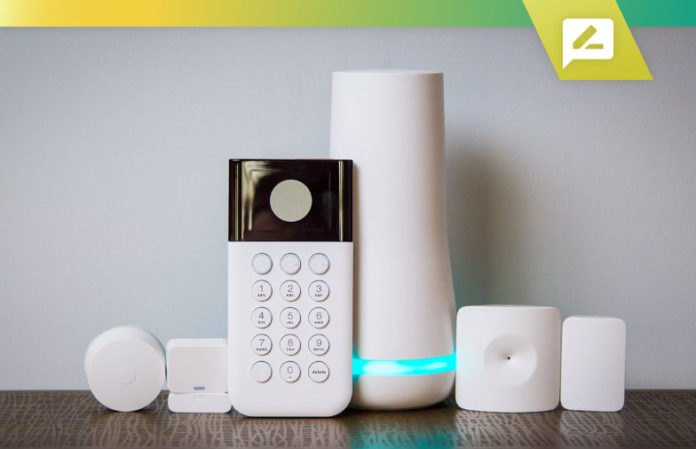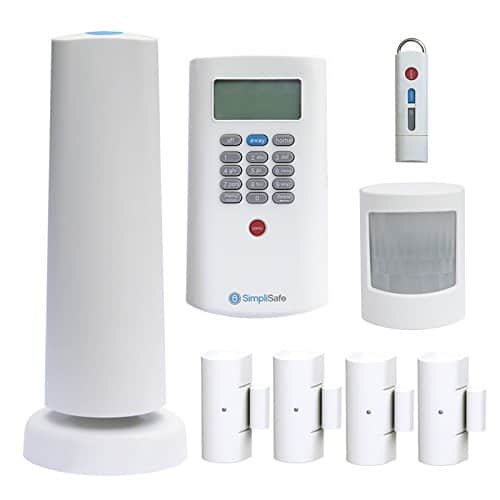Table of Content
Today's DIY systems come with companion apps that guide you through installation, monitoring, and emergencies. Some companies include apps for free, while others have them in more expensive monitoring plans. Kangaroo is notable for its rock-bottom prices—all of its equipment costs less than $80, with most devices costing $30 or less. It even offers professional monitoring for $8.25 a month —only Wyze's monitoring even comes close. Installing a security system by yourself might sound intimidating, but Link Interactive makes it as easy as peeling off a sticker or grabbing a screwdriver. This security company has a lot of equipment to choose from too, including indoor and outdoor cameras, though they're available only through the priciest plan.

There is no need to schedule an appointment for a stranger to come into your home and start drilling holes in your walls. This system offers vibration detection and is ideal for RV’s, boats, cars, safes and more. Eady-to-arm feature provides SMS texts when the system is armed, disarmed or armed in home. Each sensor can be named with up to 28 characters to help identify them easily when used with the auto-search feature. Ellular as well as WiFi for a double connection and double the protection. When autocomplete results are available use up and down arrows to review and enter to select.
Smart Thermostats
Highly-trained professionals monitor 24/7 and know precisely what to do during an emergency when every second counts. The Security Sensor detects vibrations and sends a wireless signal to the control panel or emergency number to alert. This allows for quick and easy access of the premises in real time in the instance of an alarm notification. These cameras included are 2MP high resolution 4mm fixed lens IP cameras that are going to be connected using Cat5e cables for a simple and easy setup no matter who is trying to set these up. The advanced IR filter can help capture objects up to 130 feet away in the daylight and nearly 80 feet away at night. The construction of the cameras is a heavy and durable metal and it is completely waterproof so it can be used both indoors and outdoors.
We found the process to be pretty easy, but it does mean you’ll need an extra app. Although we didn’t test that many devices this time around, we did add an extra Eero 6 Extender by the front door to ensure a strong connection with outdoor cameras. When connected to our home internet, the Eero actually gave us speeds a little better than promised, up to 900 Mbps. Wirecutter’s networking expert, senior staff writer Joel Santo Domingo, said it’s definitely a plus; he also said he’s planning to make the Eero 6 a pick in our mesh-networking guide soon.
Compare DIY home security systems
This month, we launch our inaugural PCMag Readers' Choice Award for home security systems and security cameras for home surveillance. Times are changing in home security thanks to DIY systems and devices that provide varying levels of protection. Home alarm systems can be self-monitored—right from your phone—or professionally monitored. In the self-monitored scenario, you are notified when an alarm event occurs.
Save this guide in your bookmarks to refer back to it whenever you feel lost. If you’re still not sure how to proceed, check out our other blogs on top-rated home security systems must-haves. The beauty of a DIY home security system like Frontpoint is that you get to customize your own system and pick where you want to put each item. With ADT, someone comes into your home to install for you and will often try to convince you to get more devices than you may need.
Home Security Cameras
There are do-it-yourself home security systems that are simple to install and to program. They will use motion sensors as well as entry sensors--and can be programmed to notify you of any unexpected movement, as well as if someone tries to enter through a door or window. The notifications can be sent to an iPhone, tablet, or even a landline phone number.

Compared to some other modern systems, the 2GIG GC3 isn't the fanciest or the most feature-heavy. It's the choice for users who want a sneaky solid and dependable option for home security. The GC3 design is modest and uneventful, and it's certainly not going to draw attention to itself.
Ring Alarm Pro
A DIY home security system will give you peace of mind from knowing that someone is handling any burglaries or other crimes on your property round the clock. In addition, many of these homemade home security systems can also be monitored and controlled directly from you. All in all, some DIY systems work really well for those living remotely outside of city limits where quick response times from authorities might. This system is used with the included control panel console or handheld remote transmitter to arm and disarm the alarm system. This DIY wireless security system comes with no monthly fees, no contracts as well as being self-monitored and self-controlled with a free app on your smartphone. Not only will you have remote control and monitoring capabilities but you can use the 2 way voice communication function if needed.

We found customer reviews consistently praise Frontpoint's easy setup, helpful customer support, and effective equipment. It’s important to note that no matter what system you choose, choosing a wireless security system is always going to be easier to set up. Speaking of adding devices, be sure to factor in the number of areas, such as doors and windows, you'll want to place a camera or sensor when choosing a DIY security kit. Some DIY security systems may come with a base and one or two sensors while others, like the Ring Alarm Pro, come with four sensors, a motion sensor and a range extender. The base system with four entry sensors, one motion detector, one Z-Wave extender, a keypad and a base station costs $300, and you can add other devices a la carte for reasonable prices.
To thoroughly test each system, we spent several weeks walking in front of motion sensors, opening and closing doors and windows equipped with contact sensors, soaking water-leak detectors, and setting off sirens. Next, we looked at cameras, keypads, and iOS/Android apps, when available. Finally, we armed, disarmed, and spied on each system from inside and outside the home, even testing each system’s battery backup by cutting its power. Once you decide which type of system you want, you need to pick what that system will include. Most security companies, whether its kits are DIY or professionally installed, professionally monitored or self-monitored, offer guidance if you’re confused about what to choose.

PowerG Sensors are the most advanced security sensors we have ever seen. They boast a remarkable range of 2km in open air, and they are protected with full 128-bit AES encryption. But if it ever is, DSC makes a PowerG Wireless Repeater to further expand on this ridiculous range. This is no surprise, since wireless systems are easier to program and more pleasing to use and display than their hardwired counterparts. But what may be surprising to some user is that all of our top system picks were initially released last year or earlier.



























